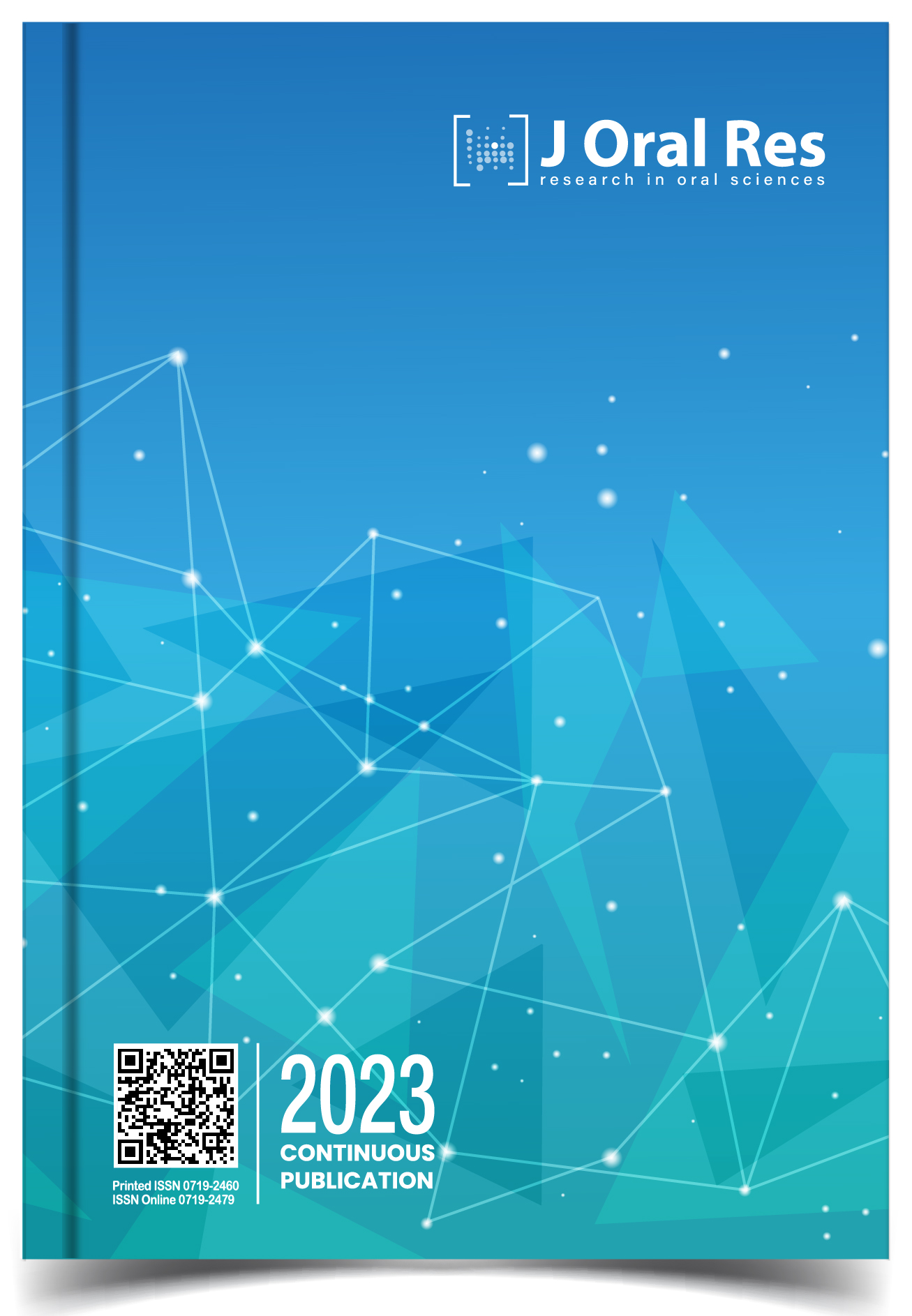The groove configuration of mandibular molars of Malaysians of Mongoloid ancestry
Abstract
Aim: Variation in dental structures is widely accepted as a combination of multiple factors such as gender, environmental effects and genetics. However, the characterization of similarities and differences in dental morphology has been lacking in relation to the factors mentioned. This study aims to assess and compare the variations in traits in mandibular molars and the influence of gender and ethnicity in affecting these traits amongst the Malaysian population of Mongoloid ancestry.
Materials and Methods: Our study population was 180 dental casts of patients, from 15 to 40 years old, comprising 56 Malays and 124 Chinese; 60 were males and 120 were females. Traits like groove pattern, number of cusps, protostylids and deflecting wrinkles were observed, scored, and recorded.
Results: This study revealed that the most common mandibular first molar (M1) was characterized by 5 cusps and displayed ‘Y’ groove pattern, while the most common mandibular second molar (M2) had 4 cusps and exhibited a groove pattern that resembled a ‘+’. Notably, all the traits studied were bilaterally symmetrical, except for the groove pattern of M1, while sexual dimorphism was observed in groove patterns of M2.
Conclusions: This study found that M1 had a preponderance of 5 cusps with ‘Y’ groove pattern, while M2 were typically 4-cusped with ‘+’ groove pattern.
Keywords: Malaysia; Asian people; Ethnicity; Gender; dental anatomy; molar.
References
2. Brues AM. Human Variation: Races, Types, and Ethnic Groups. Stephen Molnar. The Quarterly Review of Biology. 1983.
3. Wai MM,Thwin SS,Yesmin T, Ahmad A, Adnan AS, Hassan AA, Ahmad N, Zakariah NI. Nasofacial Anthropometric Study among University Students of Three Races in Malaysia. Advances in Anatomy. 2015;2015:1-5.
4. Gupta SK, Saxena P. Prevalence of cusp 7 in permanent mandibular first molars in an Indian population: a comparative study of variations in occlusal morphology. Journal of Investigative and Clinical Dentistry. 2013;4(4):240-6.
5. Biggerstaff RH. On the groove configuration of mandibular molars: The unreliability of the “dryopithecus pattern” and a new method for classifying mandibular molars. American Journal of Physical Anthropology. 1968;29(3):441-4.
6. Felemban NH, Manjunatha BS. Prevalence of the number of cusps and occlusal groove patterns of the mandibular molars in a Saudi Arabian population. J Forensic and Legal Medicine. 2017;49:54-8.
7. Scott GR, Turner CG. The Anthropology of Modern Human Teeth: Cambridge University Press; 1997.
8. Garn SM, Lewis AB, Dahlberg AA, Kerewsky RS. Interaction between Relative Molar Size and Relative Number of Cusps. Journal of Dental Research. 1966;45(4):1240-.
9. Lewis AB, Kerewsky RS. Molar Size Sequences and Fossil Taxonomy. Science. 1963;142(3595):1060. doi: 10.1126/science.142.3595.1060. PMID: 17835601.
10. DAHLBERG AA. Relationship of tooth size to cusp number and groove conformation of occlusal surface patterns of lower molar teeth. J Dent Res. 1961;40:34-8. doi: 10.1177/00220345610400012101. PMID: 13719323.
11. Goose DH, Lee GT. The mode of inheritance of Carabelli’s trait. Hum Biol. 1971;43(1):64-9. PMID: 5090316.
12. Breakdown of population Malaysia 2019-2022, by ethnicity: Statista Research Department; 2023. Available from: https://www.statista.com/statistics/ 1017372/malaysia-breakdown-of-population-by-ethnicity/.
13. Kondo S, Morita W, Ohshima H. The biological significance of tooth identification based on developmental and evolutional viewpoints. J Oral Biosci. 2022;64(3):287-302. doi: 10.1016/j.job.2022.05.004.
14. Ibrahim YKh, Tshen LT, Westaway KE, Cranbrook EO, Humphrey L, Muhammad RF, Zhao JX, Peng LC. First discovery of Pleistocene orangutan (Pongo sp.) fossils in Peninsular Malaysia: biogeographic and paleoenvironmental implications. J Hum Evol. 2013;65(6):770-97. doi: 10.1016/j.jhevol.2013.09.005. Epub 2013 Nov 5. PMID: 24210657.
15. Liao W, Harrison T, Yao Y, Liang H, Tian C, Feng Y, Li S, Bae CJ, Wang W. Evidence for the latest fossil Pongo in southern China. J Hum Evol. 2021;170:103233. doi: 10.1016/j.jhevol.2022.103233. Epub 2022 Aug 26. PMID: 36030625.
16. Loh HS. Mongoloid features of the permanent mandibular second molar in Singaporean Chinese. Aust Dent J. 1991;36(6):442-4. doi: 10.1111/j.1834-7819.1991.tb04723.x. PMID: 1785968.
17. Bunyarit SS, Asma AAA, Rahman NAA, Adri SS, Rahman MM. Dental Anomalies and Gender Dimorphism in Tooth Size of Malay Patients. Bangladesh Journal of Medical Science. 2017; 16(1):115-21.
18. Alvesalo L, Tammisalo E, Hakola P. Enamel thickness in 47,XYY males’ permanent teeth. Ann Hum Biol. 1985;12(5):421-7. doi: 10.1080/03014468500007981. PMID: 4062237.
19. Gaboutchian AV, Knyaz VA, Korost DV. New Ap-proach to Dental Morphometric Research Based on 3D Imaging Techniques. J Imaging. 2021;7(9):184. doi: 10.3390/jimaging7090184. PMID: 34564110; PMCID: PMC8469472.
20. Vlemincq-Mendieta T. Re-evaluation of Dental Morphology Methods and their Applicability in Virtual Anthropology: University of Nevada, Reno; 2023.

This work is licensed under a Creative Commons Attribution 4.0 International License.
This is an open-access article distributed under the terms of the Creative Commons Attribution License (CC BY 4.0). The use, distribution or reproduction in other forums is permitted, provided the original author(s) and the copyright owner(s) are credited and that the original publication in this journal is cited, in accordance with accepted academic practice. No use, distribution or reproduction is permitted which does not comply with these terms. © 2024.











